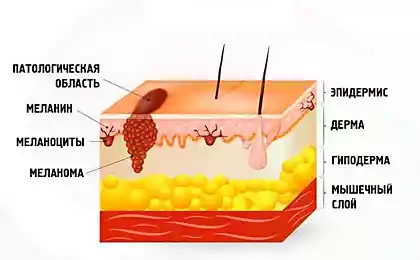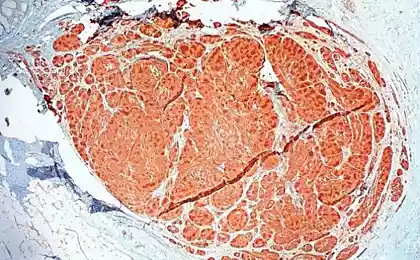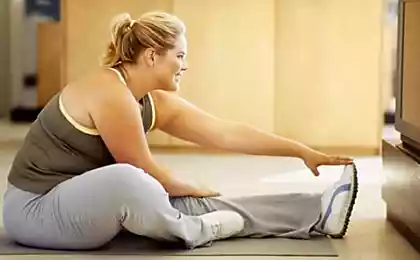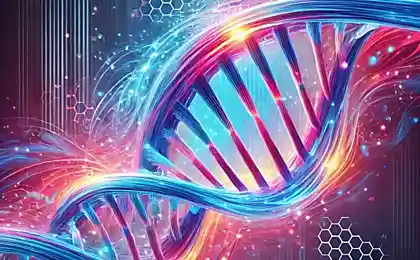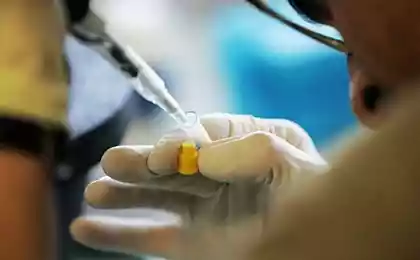523
Three steps on the way to food well-being of the planet
Seventeen million three hundred ten thousand four hundred sixty seven
An enzyme that accelerates the conversion of carbon dioxide by plants is a key factor in increasing the yield of cultivated plants. Recently, scientists have made another step to intensification of photosynthesis such important food crops as wheat and rice, which could increase their productivity and other plants by about 35-60%. A new method of photosynthesis if it gets introduced into crop plants, will not only increase productivity, but will reduce the need for water and fertilizers without which modern agriculture cannot do without.
Researchers from Cornell University and Research centre Rothamsted in the UK have successfully transplanted genes of bacteria, known as cyanobacteria, plant snuff, is often used in scientific experiments. The transplanted genes will allow the plant to develop more effective enzyme required to convert atmospheric carbon dioxide into sugars and other carbohydrates. The study is published in the journal Nature.
Scientists have long noticed that some plants convert carbon dioxide much more successful than others. These "strikers" are called C4 plants. Among them, corn and many kinds of weeds. However, 75% of the world's cultures, refers to another group called C3-plants. Its members use a slower technology of photosynthesis.
Thanks to the most advanced methods of breeding agricultural production today could increase wheat yields by about 1% annually. But this is only half of the figure, is necessary in order to ensure that you feed the global population in the near future. Given the importance of the problem of the yield of food crops, researchers for a long time trying to find a way to convert the most common C3 crop plants, including wheat, rice and potatoes in C4.
In this way there had been some progress. But researchers from Cornell and Rothamsted chose a more simple and effective method. Instead of having to convert one type of plant to another, changing the anatomy, adding a new cell and changing the cellular structure, scientists have been improving the components of existing cells.
Ninety six million one hundred forty two thousand seven hundred fifty one
Instead of simulation of C4-plants, the researchers borrowed a three-part photosynthesis mechanism of cyanobacteria, which use photosynthesis to own specific tools. First, within cells, proteins form a special compartment, where CO2 is concentrated. Second, this compartment contains an enzyme accelerator, facilitating the conversion of carbon dioxide. And, thirdly, the cell membrane has a special "pumps", pumping CO2 into the cells.
Earlier this year, researchers were able to form in plant cells protein compartments for carbon dioxide. The result of their last work was the creation of an enzyme accelerator.
Today left to do the third step, to establish a mechanism for the injection of CO2 into the cells. This problem is solved by colleagues scientists from Cornell and Rothamsted. When a solution is found, all three components will be combined in the same plants.
Professor of molecular biology and genetics from Cornell University Maureen Hansen (Maureen Hansen) believes that the practical results of works of scholars will be available in commercial agriculture, not earlier than in 5-10 years.
According to Professor of medicine, biology and environment the Australian national University, Dean Price (Dean Price), who was not involved in the current study, we are not talking about the usual transplanting one or two genes. To be implemented in plants 10-15 genes of bacteria and make sure the genes are stable. Only then can begin extensive field testing under the requirements of the rules regulating the use of genetically modified crops.
Source: facepla.net
An enzyme that accelerates the conversion of carbon dioxide by plants is a key factor in increasing the yield of cultivated plants. Recently, scientists have made another step to intensification of photosynthesis such important food crops as wheat and rice, which could increase their productivity and other plants by about 35-60%. A new method of photosynthesis if it gets introduced into crop plants, will not only increase productivity, but will reduce the need for water and fertilizers without which modern agriculture cannot do without.
Researchers from Cornell University and Research centre Rothamsted in the UK have successfully transplanted genes of bacteria, known as cyanobacteria, plant snuff, is often used in scientific experiments. The transplanted genes will allow the plant to develop more effective enzyme required to convert atmospheric carbon dioxide into sugars and other carbohydrates. The study is published in the journal Nature.
Scientists have long noticed that some plants convert carbon dioxide much more successful than others. These "strikers" are called C4 plants. Among them, corn and many kinds of weeds. However, 75% of the world's cultures, refers to another group called C3-plants. Its members use a slower technology of photosynthesis.
Thanks to the most advanced methods of breeding agricultural production today could increase wheat yields by about 1% annually. But this is only half of the figure, is necessary in order to ensure that you feed the global population in the near future. Given the importance of the problem of the yield of food crops, researchers for a long time trying to find a way to convert the most common C3 crop plants, including wheat, rice and potatoes in C4.
In this way there had been some progress. But researchers from Cornell and Rothamsted chose a more simple and effective method. Instead of having to convert one type of plant to another, changing the anatomy, adding a new cell and changing the cellular structure, scientists have been improving the components of existing cells.
Ninety six million one hundred forty two thousand seven hundred fifty one
Instead of simulation of C4-plants, the researchers borrowed a three-part photosynthesis mechanism of cyanobacteria, which use photosynthesis to own specific tools. First, within cells, proteins form a special compartment, where CO2 is concentrated. Second, this compartment contains an enzyme accelerator, facilitating the conversion of carbon dioxide. And, thirdly, the cell membrane has a special "pumps", pumping CO2 into the cells.
Earlier this year, researchers were able to form in plant cells protein compartments for carbon dioxide. The result of their last work was the creation of an enzyme accelerator.
Today left to do the third step, to establish a mechanism for the injection of CO2 into the cells. This problem is solved by colleagues scientists from Cornell and Rothamsted. When a solution is found, all three components will be combined in the same plants.
Professor of molecular biology and genetics from Cornell University Maureen Hansen (Maureen Hansen) believes that the practical results of works of scholars will be available in commercial agriculture, not earlier than in 5-10 years.
According to Professor of medicine, biology and environment the Australian national University, Dean Price (Dean Price), who was not involved in the current study, we are not talking about the usual transplanting one or two genes. To be implemented in plants 10-15 genes of bacteria and make sure the genes are stable. Only then can begin extensive field testing under the requirements of the rules regulating the use of genetically modified crops.
Source: facepla.net
What is life choices
High-speed electric car from Liechtenstein running on salt water, has received approval in Europe



